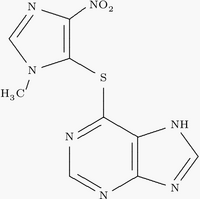METHOD OF PREPARATION
1. Calculate the required quantity of each ingredient for the total amount to be prepared.
2. Accurately weigh and/or measure each ingredient.
3. If tablets are used, pulverize the tablets to a fine powder, or use bulk clonazepam powder.
4. Slowly add the Ora-Plus and mix, forming a smooth paste and then a uniform suspension.
5. Slowly add the Ora-Sweet, Ora-Sweet SF, or cherry syrup to volume and mix well.
6. Package and label.
PACKAGING
Package in tight, light-resistant containers.
LABELING
Keep out of reach of children. Use only as directed. Shake well before using. Protect from light.
STABILITY
A beyond-use date of 60 days can be used for this preparation.1,2
USE
Clonazepam oral liquid has been used in the management of various seizure conditions.
QUALITY CONTROL
Quality-control assessment can include weight/volume, pH (pH of 4 to 4.4 using the "Ora" family of vehicles and 2.5 to 3.3 using cherry syrup), specific gravity, active drug assay, color, rheological properties/pourability, physical observation, and physical stability (discoloration, foreign materials, gas formation, mold growth).3
DISCUSSION
Clonazepam is a benzodiazepine anticonvulsant that is structurally and pharmacologically related to diazepam and other benzodiazepines. It is well absorbed from the gastrointestinal tract. Uses of clonazepam include the prophylactic management of LennoxGastaut syndrome and akinetic and myoclonic seizures. It also may be used in the management of petit mal seizures that are unresponsive to succinimides.4
Clonazepam USP (C^sub 15^H^sub 10^ClN^sub 3^O^sub 3^, MW 315.71, Klonopin) occurs as a light-yellow powder with a faint odor. It is insoluble in water and slightly soluble in alcohol.2 It is available as 0.5-, 1-, and 2-mg tablets that also contain lactose, magnesium stearate, microcrystalline cellulose, and cornstarch. The 0.5-mg tablets contain FD&C Yellow No. 6 Lake, and the 1-mg tablets contain FD&C Blue No. 1 Lake and FD&C Blue No. 2 Lake.5
Ora-Plus is an oral suspending vehicle with a pH of approximately 4.2 and an osmolality of about 230 mOsm/kg. It is thixotropic, with a viscosity of approximately 1,000 cps at 25°C. It contains purified water, microcrystalline cellulose, sodium carboxymethylcellulose, xanthan gum, carrageenan, sodium phosphate and citric acid as buffering agents, simethicone as an antifoaming agent, and potassium sorbate and methylparaben as preservatives.6
Ora-Sweet syrup is a flavoring vehicle for oral extemporaneous preparations. It has a citrus-berry flavor blend and contains glycerin and sorbitol to prevent "cap-lock" problems associated with many syrups. It is buffered to a pH of approximately 4.2 and has an osmolality of about 3,240 mOsm/kg. It contains purified water, sucrose, glycerin, sorbitol (5%), flavoring, sodium phosphate and citric acid as buffering agents, and potassium sorbate and methylparaben as preservatives.7
Ora-Sweet SF sugar-free, alcohol-free syrup is a flavoring vehicle for oral extemporaneous preparations. It has a citrus-berry flavor blend. It is buffered to a pH of approximately 4.2 and may be used alone or in combination with other vehicles. It will tolerate a dilution to 50% with dissolved actives in water or suspending agents and still retain an acceptable taste. It has an osmolality of 2,150 mOsm/kg. It contains water, sodium saccharin, xanthan gum, glycerin, and sorbitol; citric acid and sodium citrate as buffers; methylparaben, propylparaben, and potassium sorbate as preservatives; and flavoring agents.8
Cherry Syrup NF consists of cherry juice (475 mL), sucrose (800 g), alcohol (20 mL), and purified water (to make 1000 mL). It should be preserved in tight, light-resistant containers. Exposure to excessive heat should be prevented. It should be labeled to state the Latin binomial name and, following the official name, the part of the plant source from which it was derived. It contains from 1.0% to 2.0% alcohol. It is used as an oral vehicle.2
References
1. Allen LV Jr, Erickson MA III. Stability of acetazolamide, allopurinol, azathioprine, clonazepam, and flucytosine in extemporaneously compounded oral liquids. Am J Health Syst Pharm 1996; 53(16): 1944-1949.
2. US Pharmacopeial Convention, Inc. USP-Pharmacists' Pharmacopeia. Rockville, MD: US Pharmacopeial Convention, Inc.; 2005: 362, 408-431, 678.
3. Allen LV Jr. Standard operating procedure for quality assessment of oral and topical liquids. IJPC 1999; 3(2): 146-147.
4. McEvoy GK, ed. AHFS Drug Information-2005. Bethesda, MD: American Society of Health-Systems Pharmacists; 2005: 2124-2126.
5. [No author listed.] Physicians' Desk Reference. 58th ed. Montvale, NJ: Thomson PDR; 2004: 2920-2923.
6. Ora-Plus [product information]. Minneapolis, MN: Paddock Laboratories, Inc.
7. Ora-Sweet [product information]. Minneapolis, MN: Paddock Laboratories, Inc.
8. Ora-Sweet SF [product information], Minneapolis, MN: Paddock Laboratories, Inc.
Copyright International Journal of Pharmaceutical Compounding Nov/Dec 2005
Provided by ProQuest Information and Learning Company. All rights Reserved



